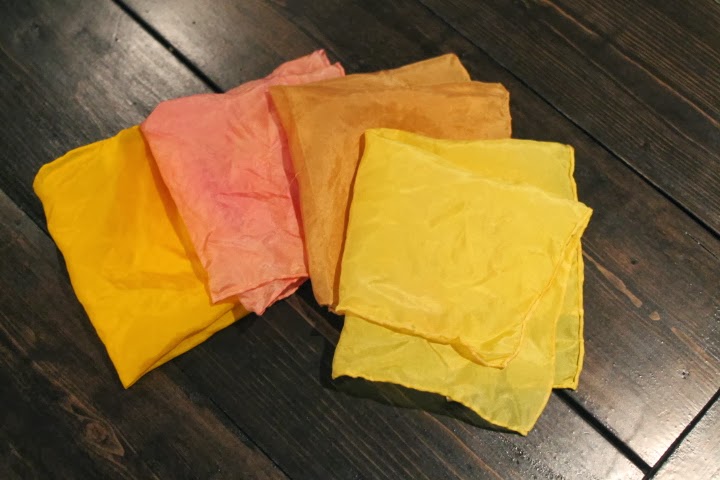So how do we color our silks? Largely with things from the kitchen or the garden, depending on the season. When my son and I decided to do some yesterday, we hit the spice rack first. A few generous tablespoons of turmeric landed in the first jar, paprika in the last. Then we chopped up a beet from our root cellar (grown last summer in the garden!) and in the final jar we put a few heaping tablespoons of ground coffee. A few tablespoons of vinegar went into each jar (all measurements were done by a 3 year old, so you can be sure, they were not exact!) and then I poured boiling water into each jar.
We stirred (wearing over mitts!) with chop sticks, added a silk to each jar and put lids on them.
Then we forgot about them and went to paint. After 24 hours on the counter (even better on the window sitting in the sun!!) we remove the silk from it's dye bath and rinse it well with color water.
The results?
Beautiful.


























